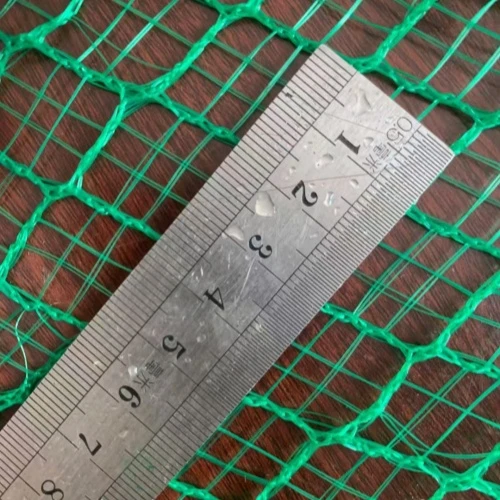-
 Afrikaans
Afrikaans -
 Albanian
Albanian -
 Amharic
Amharic -
 Arabic
Arabic -
 Armenian
Armenian -
 Azerbaijani
Azerbaijani -
 Basque
Basque -
 Belarusian
Belarusian -
 Bengali
Bengali -
 Bosnian
Bosnian -
 Bulgarian
Bulgarian -
 Catalan
Catalan -
 Cebuano
Cebuano -
 China
China -
 Corsican
Corsican -
 Croatian
Croatian -
 Czech
Czech -
 Danish
Danish -
 Dutch
Dutch -
 English
English -
 Esperanto
Esperanto -
 Estonian
Estonian -
 Finnish
Finnish -
 French
French -
 Frisian
Frisian -
 Galician
Galician -
 Georgian
Georgian -
 German
German -
 Greek
Greek -
 Gujarati
Gujarati -
 Haitian Creole
Haitian Creole -
 hausa
hausa -
 hawaiian
hawaiian -
 Hebrew
Hebrew -
 Hindi
Hindi -
 Miao
Miao -
 Hungarian
Hungarian -
 Icelandic
Icelandic -
 igbo
igbo -
 Indonesian
Indonesian -
 irish
irish -
 Italian
Italian -
 Japanese
Japanese -
 Javanese
Javanese -
 Kannada
Kannada -
 kazakh
kazakh -
 Khmer
Khmer -
 Rwandese
Rwandese -
 Korean
Korean -
 Kurdish
Kurdish -
 Kyrgyz
Kyrgyz -
 Lao
Lao -
 Latin
Latin -
 Latvian
Latvian -
 Lithuanian
Lithuanian -
 Luxembourgish
Luxembourgish -
 Macedonian
Macedonian -
 Malgashi
Malgashi -
 Malay
Malay -
 Malayalam
Malayalam -
 Maltese
Maltese -
 Maori
Maori -
 Marathi
Marathi -
 Mongolian
Mongolian -
 Myanmar
Myanmar -
 Nepali
Nepali -
 Norwegian
Norwegian -
 Norwegian
Norwegian -
 Occitan
Occitan -
 Pashto
Pashto -
 Persian
Persian -
 Polish
Polish -
 Portuguese
Portuguese -
 Punjabi
Punjabi -
 Romanian
Romanian -
 Russian
Russian -
 Samoan
Samoan -
 Scottish Gaelic
Scottish Gaelic -
 Serbian
Serbian -
 Sesotho
Sesotho -
 Shona
Shona -
 Sindhi
Sindhi -
 Sinhala
Sinhala -
 Slovak
Slovak -
 Slovenian
Slovenian -
 Somali
Somali -
 Spanish
Spanish -
 Sundanese
Sundanese -
 Swahili
Swahili -
 Swedish
Swedish -
 Tagalog
Tagalog -
 Tajik
Tajik -
 Tamil
Tamil -
 Tatar
Tatar -
 Telugu
Telugu -
 Thai
Thai -
 Turkish
Turkish -
 Turkmen
Turkmen -
 Ukrainian
Ukrainian -
 Urdu
Urdu -
 Uighur
Uighur -
 Uzbek
Uzbek -
 Vietnamese
Vietnamese -
 Welsh
Welsh -
 Bantu
Bantu -
 Yiddish
Yiddish -
 Yoruba
Yoruba -
 Zulu
Zulu
bird control netting
Bird Control Netting An Effective Solution for Managing Avian Intrusions
Birds can bring a sense of beauty and tranquility to our surroundings, but they can also pose significant challenges in various settings. From agricultural fields to urban environments and commercial properties, the presence of birds can lead to crop damage, health hazards, and property degradation. In light of these issues, bird control netting has emerged as a highly effective solution for managing avian intrusions while minimizing harm to wildlife.
What is Bird Control Netting?
Bird control netting is a specialized material designed to prevent birds from accessing certain areas. Made from durable, lightweight polyethylene or nylon, this type of netting is available in various mesh sizes, colors, and thicknesses, each tailored to address different bird species and project requirements. The primary purpose of bird control netting is to create a physical barrier that deters birds from nesting, roosting, or feeding in undesired locations.
Applications of Bird Control Netting
1. Agricultural Protection One of the most common uses of bird control netting is in agriculture. Birds can wreak havoc on crops, consuming fruits and seeds before they can be harvested. By installing netting over fields, farmers can significantly reduce bird damage and protect their yield. This method is environmentally friendly, as it minimizes the need for chemical repellents or other lethal measures.
2. Urban Environments In cities, birds can be both a nuisance and a health hazard. Pigeons, seagulls, and sparrows are notorious for roosting on buildings, bridges, and other structures, leading to unsightly messes and potential disease transmission. Bird control netting can be installed on rooftops and ledges, providing a barrier that prevents birds from taking up residence. It is a discreet solution that doesn't detract from the aesthetics of the environment.
3. Commercial Properties Businesses, especially those in the food industry, face unique challenges when dealing with birds. Contamination risks and property damage can lead to significant financial losses and reputational harm. Implementing bird control netting around outdoor dining areas or food storage facilities can help keep birds at bay and maintain a clean, safe environment for patrons.
bird control netting

4. Industrial Sites In industrial settings, bird droppings can be a severe issue, leading to corrosion, equipment damage, and safety hazards. Heavy-duty bird netting can be employed to safeguard machinery and infrastructure, reducing maintenance costs and prolonging the lifespan of equipment.
Benefits of Bird Control Netting
- Non-lethal Method Bird control netting is a humane approach to managing bird populations. Unlike traps or chemical repellents, it does not harm birds, allowing for the natural balance of ecosystems to be maintained.
- Durability Quality bird netting is designed to withstand harsh weather conditions, UV exposure, and wear and tear, making it a long-term solution. When properly installed, it can last for several years, providing ongoing protection.
- Versatility This netting can be adapted for various applications, including different bird species, environments, and structural configurations. With the right specifications, it can be effectively used in virtually any setting.
- Cost-effective While there is an initial investment for purchasing and installing bird control netting, the long-term savings on crop loss, cleanup, and maintenance can be substantial. It is an economical solution for businesses and farmers alike.
Conclusion
Bird control netting serves as an essential tool in managing bird populations effectively and humanely. Its various applications across agricultural, urban, and commercial settings demonstrate its versatility and effectiveness in preventing avian damage. By adopting bird control netting, individuals and organizations can safeguard their assets, enhance their environment, and promote an ecological balance that respects both human interests and wildlife. As we face ongoing challenges posed by birds, implementing such solutions will be crucial in both protecting our investments and fostering sustainable ecosystems for the future.
-
Shipping Plastic Bags for Every NeedNewsJul.24,2025
-
Safety Netting: Your Shield in ConstructionNewsJul.24,2025
-
Plastic Mesh Netting for Everyday UseNewsJul.24,2025
-
Nylon Netting for Every UseNewsJul.24,2025
-
Mesh Breeder Box for Fish TanksNewsJul.24,2025
-
Expanded Steel Mesh Offers Durable VersatilityNewsJul.24,2025











